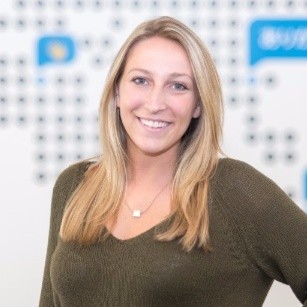Can you make sales reps actually care about your strategic partnership? (Michele Albanese, Drift)
It’s not always easy to get companies to partner with you. Sometimes, they have preconceived notions or biases against you, and you need to figure out how to overcome them.
At SaaS Connect, Michele Albanese explained how her team at Drift approaches this very real challenge.
By “finding the black swan,” Drift is able to overcome challenges in building a partnership. Michele offered three case studies to prove this method’s effectiveness.
What is a black swan in partnerships?
Michele’s use of the term “black swan” comes from a book called “Never Split the Difference” by Chris Voss. In it, he defines a black swan as “a small or large piece of information that has a high impact on the implementation of a negotiated agreement.”
For Drift, this is the high-impact needs of a potential partner. It’s something that the partner is not totally aware they need, but if Drift is able to uncover that need it helps them solve all sorts of problems that would otherwise stop a potential partnership dead in its tracks.
How do you sell to someone who sees you as competition?
Drift found themselves with a unique opportunity — and a unique challenge — in a potential partnership with Marketo, which provides marketing automation software.
For Drift, a partnership with Marketo represented a huge win. Marketo has the largest immediate ideal customer fits for Drift. So, a partnership with them would have meant a lot of revenue growth.
However, they faced a big challenge: In late 2019, Drift started to create an email product that was very similar to one of Marketo’s. Marketo thought Drift was trying to compete. So, Drift went looking for black swans.
Here was Marketo’s: Drift is able to drives contacts into the Marketo database. The more contacts Marketo gets, the more people adopt its platform, and the more that company grows.
This win-win approach helped Drift secure Marketo as a partner.
How do you partner with someone who isn’t interested?
Drift also approached LinkedIn Sales Navigator, which is specific to sales reps to build a profile for their product for conversational development reps. A partnership with LinkedIn Sales Navigator would help bring tools that CDRs are already using to their platform. This would help make the reps’ work easier.
The conflict came when Drift realized that LinkedIn wasn’t particularly interested in chatbots. LinkedIn was interested in Drift’s customers, though.
However, through some exploring, Drift found that by giving customers easier access to LinkedIn Sales Navigator, they were able to drive email credit. This is the angle they took with LinkedIn when proposing a partnership.
How do you partner with someone when you already have a similar partner?
Drift noticed that a lot of its own customers were already using Demandbase. A partnership made sense. Drift wanted to make sure they were meeting their clients where they were, using platforms they were already using.
However, Drift already had a partnership with a competitor, Clearbit, which made it difficult for them to justify a partnership with Demandbase, as well. Demandbase wanted to know what was in it for them. So, Drift gave their product the first opportunity to be tied to revenue directly. This advantage secured them the partnership.
This paid off for Demandbase, as well — Drift became Demandbase’s most innovative integration in 2018.
